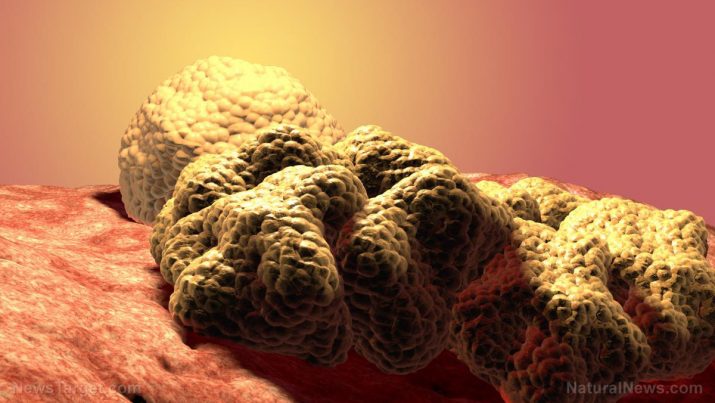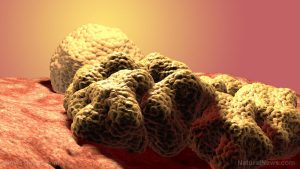
Olfactory neuroblastoma – causes, side effects and treatments at NaturalPedia.com
Thursday, May 24, 2018 by Michelle Simmons
http://www.naturalpedia.com/olfactory-neuroblastoma-causes-side-effects-and-treatments-at-naturalpedia-com.html

Olfactory neuroblastoma is a rare type of cancer that occurs in the tissues of the upper part of the nasal cavity. This area is near the bone that separates the nasal cavity from the brain. These tissues are involved in the sense of smell. The cancer may spread from the nasal cavity to the bone around the eyes, the sinuses, the front part of the brain, or the lymph nodes in the neck. It is the most common type of nasal cavity tumor in children, particularly in teens. Esthesioneuroblastoma is another name for this type of cancer.
The cause of olfactory neuroblastoma remains unknown, although researchers suspect that it is influenced by genetic and environmental factors. People who had a family member with any head and cancer at a higher risk of developing this type of cancer. Smokers are also at risk of developing olfactory neuroblastoma.

Known side effects of olfactory neuroblastoma
The known side effects of olfactory neuroblastoma may include pain around the eyes, stuffiness or congestion that worsens or does not improve, blockage of the nose, nasal drainage in the throat, watery eyes, pus from the nose, face or tooth numbness, loose teeth, decreased sense of smell, loss of or change in vision, ear pain or pressure, difficulty opening the mouth, and enlarged lymph nodes in the neck.
Body systems harmed by olfactory neuroblastoma
The body system harmed by olfactory neuroblastoma is the olfactory system.
List of foods or nutrients that prevent olfactory neuroblastoma
There is no information on what foods or nutrients prevent olfactory neuroblastoma. However, cancers in the nasal cavity may be prevented by avoiding the use of tobacco products and avoiding exposure to irritating particles, such as dust from wood, leather, metals, asbestos, and flour.
Treatments, management plans for olfactory neuroblastoma
Treatments for olfactory neuroblastoma include surgery. In most cases, the first treatment involved in a nasal cavity cancer, such as olfactory neuroblastoma, is surgery to remove the tumor. Often, this treatment is used to remove a large swath of tissue around the cancer and to help ensure that all cancer has been removed.
Another treatment for olfactory neuroblastoma involves radiation therapy, which may be the primary treatment or it might be done after surgery to reduce the chances of the cancer recurring. In some cases, chemotherapy may also be used to treat this type of cancer. A combination of treatments involving radiation and chemotherapy after surgery may be needed for a greater chance of survival.
In addition, following a healthy diet and living a healthy lifestyle may play a role in a patient’s recovery.
Where to learn more
- Cancer Free Lifestyles Rock!
- 5 Home remedies for sinus infections
- Is Good Health Worth Paying For?
- Healthy Living – Definition and How to Go About It
- The Importance of Healthy Living One Should Be Aware Of!
Summary
Olfactory neuroblastoma is a rare type of cancer that occurs in the tissues of the upper part of the nasal cavity.
Olfactory neuroblastoma causes pain around the eyes, stuffiness or congestion that worsens or does not improve, blockage of the nose, nasal drainage in the throat, watery eyes, pus from the nose, face or tooth numbness, loose teeth, decreased sense of smell, loss of or change in vision, ear pain or pressure, difficulty opening the mouth, and enlarged lymph nodes in the neck.
Olfactory neuroblastoma harms the olfactory system.
Olfactory neuroblastoma can be treated with surgery, radiation therapy, and chemotherapy.
Olfactory neuroblastoma can be managed by following a healthy diet and living a healthy lifestyle.
Sources include:
Tagged Under: Tags: Olfactory neuroblastoma





